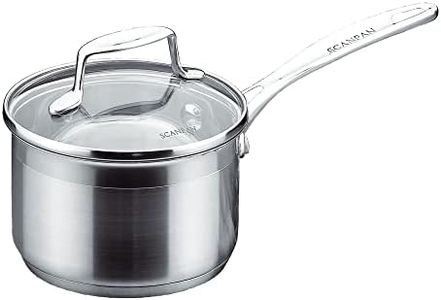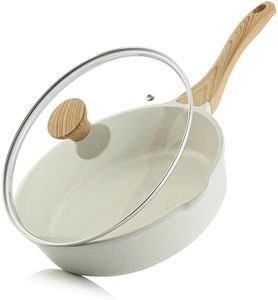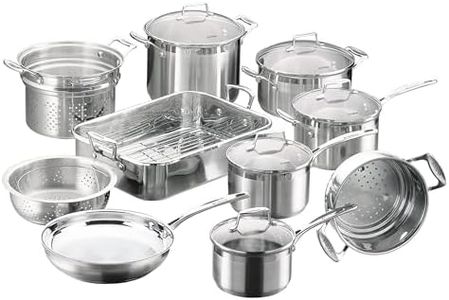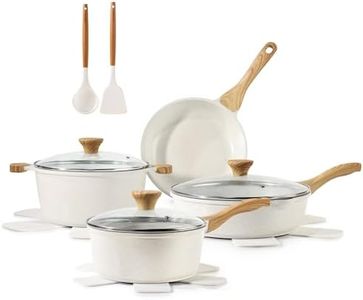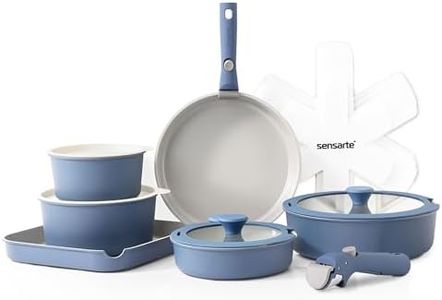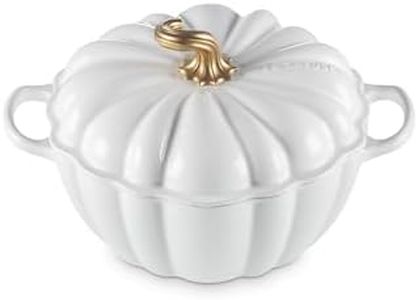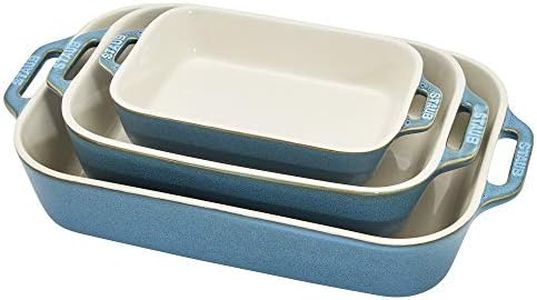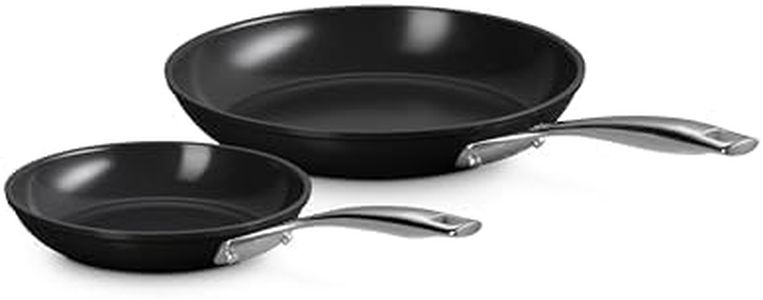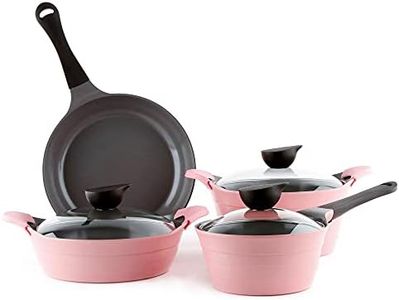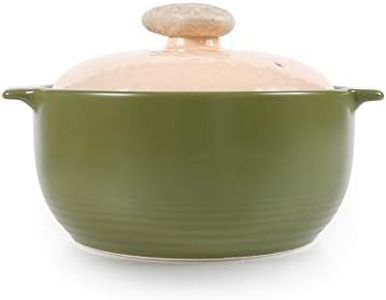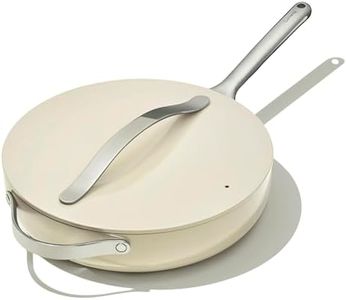We Use CookiesWe use cookies to enhance the security, performance,
functionality and for analytical and promotional activities. By continuing to browse this site you
are agreeing to our privacy policy
10 Best Ceramic Cookwares
From leading brands and best sellers available on the web.Buying Guide for the Best Ceramic Cookwares
Choosing the right ceramic cookware can make a big difference in your cooking experience. Ceramic cookware is popular because of its non-stick properties and how easy it is to clean, but not all ceramic cookware is the same. To find the best fit for you, it's important to understand a few core specifications. By knowing what each feature means, and how it relates to your personal cooking habits, you’ll be able to pick cookware that matches your style and needs, ensuring you enjoy your time in the kitchen and get the results you want.Coating TypeThe coating on ceramic cookware refers to the non-stick layer, usually made from a silica-based ceramic material. This is important because it affects how easily food releases and how simple it is to clean. There are usually pure ceramic coatings and ceramic-infused coatings; the former tends to be thicker and more durable, while the latter is often lighter and may wear out faster. If you cook sticky foods often or want very easy clean-up, a higher quality, thicker coating will be better for you. Lighter coatings are suitable if you only occasionally use non-stick pans or cook simpler dishes.
Base MaterialCeramic cookware can have different metal bases, like aluminum or stainless steel, beneath the ceramic coating, which impacts heat distribution and weight. Aluminum bases conduct heat very quickly and evenly, making them great for fast, precise cooking, but they can be prone to warping. Stainless steel bases are heavier and hold heat well, which can be good for slow, simmering dishes. If you need quick meals or like making eggs and pancakes, choose cookware with an aluminum base. If you prefer stews or dishes that need steady heat, stainless steel may suit you better.
Oven and Dishwasher SafetyMost ceramic cookware claims to be oven and dishwasher safe, but there are limits to temperatures and cycles. Oven safety means you can finish dishes in the oven or keep them warm, but check the maximum temperature; lower-temp safe pans might not handle broiling or high roasting. Dishwasher safety makes cleaning easier, but some coatings may last longer if washed by hand. If you often use your oven or prefer dishwasher clean-up, pay close attention to these ratings to avoid damage and inconvenience.
Handle and Lid TypeHandles and lids can be made of different materials: metal, silicone, or plastic, and may or may not stay cool during cooking. Metal handles are usually oven-safe but get hot, while silicone or plastic handles may stay cooler but might not be oven-safe. Glass lids let you check food without removing the lid, but can be heavier. Consider how you like to cook—if you move pans from stove to oven, choose oven-safe handles and lids; if you want comfort and easy monitoring, look for pans with ergonomic, stay-cool handles and see-through lids.
Pan Thickness and WeightThe thickness of ceramic cookware affects durability, weight, and how evenly heat spreads. Thicker pans are sturdier and distribute heat more evenly, which means less chance of burning foods, but they are also heavier. Thinner pans heat up faster and are easier to move but may warp and cause uneven cooking. If you prefer lightweight pans for easy use and cleaning, look for thinner options. If you want stable temperature and long-lasting cookware for regular use, thicker, heavier pans may be the best choice.
